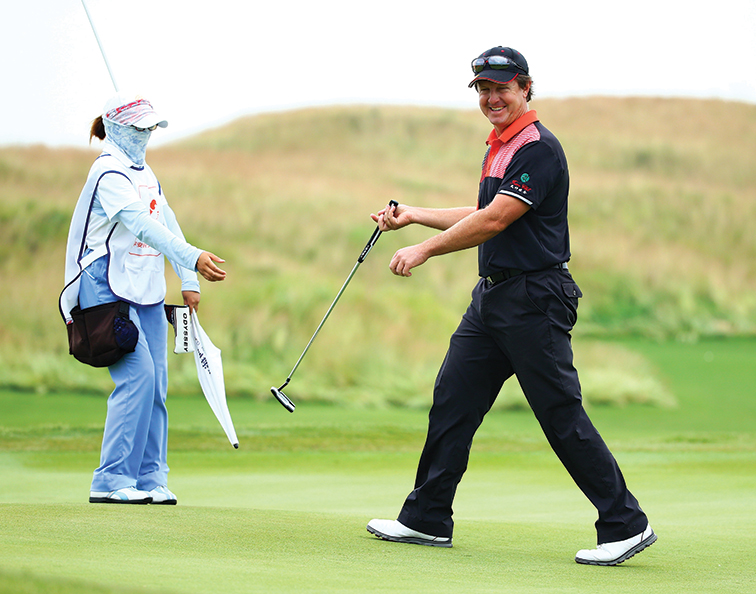JORDAN Spieth may have won the 2016 Australian Open, but it was Scott Laycock who made an indelible impression on me. I was lucky enough to play in the pro-am at Royal Sydney Golf Club on behalf of Australian Golf Digest and I was paired with the Victorian professional.
It’s not often you get the opportunity to play with a tour player – the unique experience provides a platform to witness not just how beautifully they strike the ball but also learn about their unique golf voyage and pick their brain about all things ‘pro golf’.
Unlike players such as Cameron Smith and Curtis Luck who are just starting out, Laycock is at a different stage of his career and I had the pleasure of hearing all about it.

He spent a season on the US PGA Tour in 2003 and played the Japan Golf Tour for eight years, where he was named rookie of the year in 2000. Laycock rose to public prominence by falling agonisingly short of capturing the 2001 Australian Open at The Grand Golf Club on Queensland’s Gold Coast, eventually finishing three shots behind Stuart Appleby.
It would be accurate to describe him as a journeyman – he hasn’t reached the lofty heights of some of his compadres, like Appleby, Robert Allenby or Geoff Ogilvy, but Laycock has managed to compete successfully for more than 20 years, which is certainly no easy feat.
At 45 years of age it is Laycock’s next chapter that captivated me. The two areas of focus for him are coaching and course design. He has been teaching golf in China for the past two years and has even picked up the native language, Mandarin. When I asked about his teaching philosophy, he remarked that he likes to keep it simple. When working with kids he encourages abandoning the technical equipment, such as Trackman, in favour of letting them develop their creativity by playing with a limited number of clubs. This way they will learn how to hit different shots by changing their biomechanics.
Simply by using a 7-iron, pitching wedge and a putter, kids learn instinctively how to hit the ball high, low and move the ball with the full swing and short game – a smart method.
Laycock’s theory behind golf course design also struck a chord with me. He believes in designing golf courses that make the game easier and more fun for the average golfer. He also says too many clubs around the world want their course to be set up for a national championship, but are neglecting the fact that the majority of members are not tour players who hit the ball 300 metres.
Laycock is anti-long-and-hard, and all for shorter courses that will play easier and take less time to play, all in an effort to increase participation numbers. He subscribes to what he calls the “150, 300, 470 concept”. These are the maximum distances he endorses when designing par 3s, par 4s and par 5s. He firmly believes by making courses shorter, amateur golfers will enjoy lower scores and in turn will play more golf.
Laycock is currently working on a course design for Pakenham Golf Course in Victoria, where there is also a new driving range being built.
As Laycock looks to his future in teaching and pursuing design projects, I wish him nothing but the success he so thoroughly deserves.
On a personal note, Scott was incredibly engaging with our group and took the time to recount tales from his time on the tour and help our amateurs with some wonderful advice.
From personal experience, I can say that tour players aren’t always so accommodating and friendly, so it was refreshing to spend five hours with not just a quality golfer, but also a quality individual.




